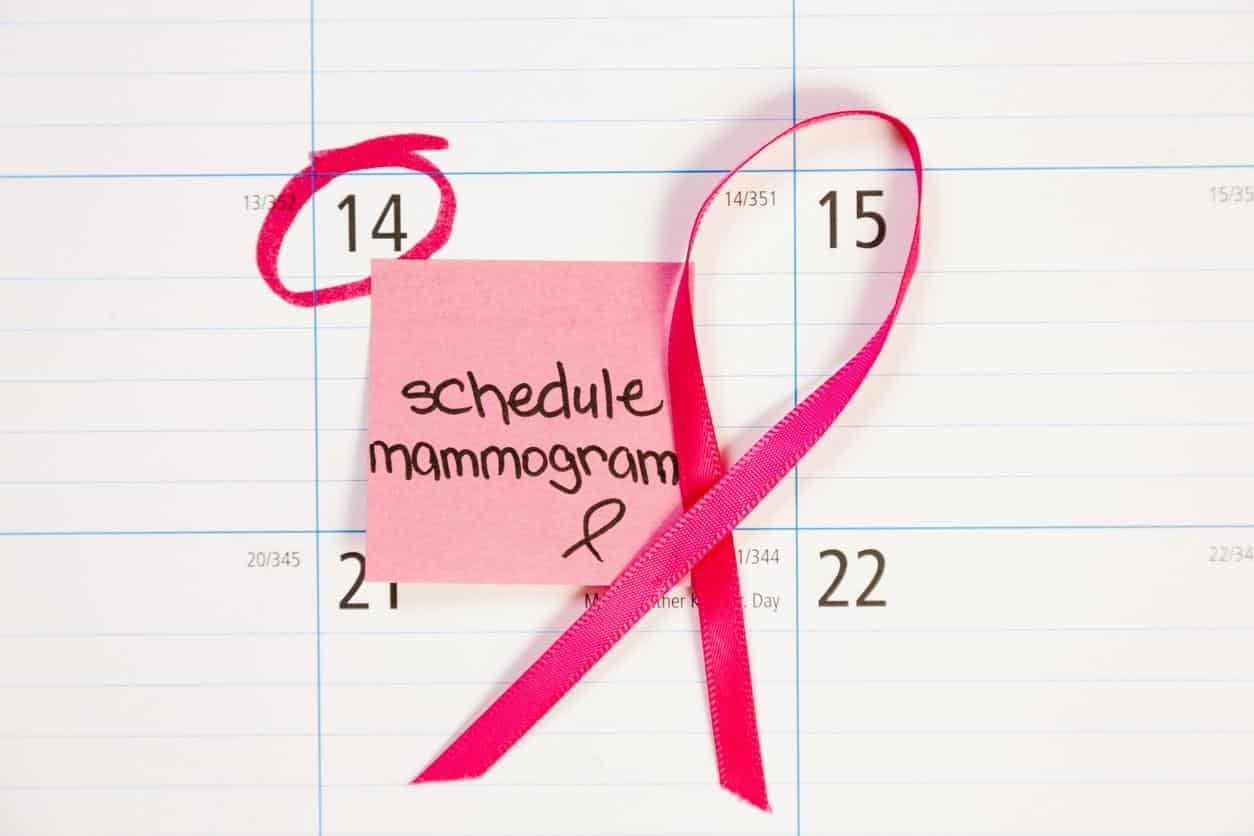Mammograms are an important part of active self-care for all women between the ages of 40 and 75. During this time, breast tissue is the most likely to go rogue and attempt to form tumors. Regular screening is the best way to catch tumor cells early and stop them before they become cancerous. This means that you should schedule a mammogram once a year from 40 to 55, and every other year from 55 to 75.
But that first mammogram is always a nervous moment. Women approaching their mammogram years and those considering a new mammogram location benefit from knowing what to expect and how to prepare for their mammogram. Let’s take a look at the practical steps you can take to make your mammogram as fast, easy, and comfortable as possible.
The 5 Steps to Prepare for Your Mammogram
- Prepare Your Paperwork
- Schedule a Comfortable Mammary Day
- What to Wear
- Eat and Drink Normally
- Book Time for a Bath
1) Prepare Your Paperwork
- – Personal ID
- – Medical ID if applies
- – Insurance Card and Information
- – Mammogram Prescription or Doctor’s Orders
- – Past Mammogram Scans
- – Recent Surgeries or Conditions
As with any medical procedure, you want to come ready with all your paperwork – especially if you are getting a mammogram at a new clinic or for the first time. It’s always better to choose a regular mammogram clinic so that your records are consistent and can be easily compared from scan to scan.
Make sure to have your ID, insurance, medical records, your history of past surgeries, and, of course, your doctor’s note.
If this is not your first mammogram and you are starting at a new clinic, bring your past mammogram scans. A big part of regular screening is comparing your scans from one year to the next to detect any developing changes. Relative observation is more effective than snapshot observations when it comes to cancer screening.
2) Schedule for a Comfortable Mammogram Day
What day should you schedule a mammogram? Common wisdom suggests that you schedule on a day when your breasts will not be sore, swollen, or tender. A mammogram involves pressing each breast flat between scanning plates to get the clearest tissue scan, which can be a little uncomfortable. This will mean predicting the right point in your cycle when your breasts feel the most normal – and least likely to be uncomfortable when pressed.
If you’re not sure, consider booking one week after your period, after you are not bleeding and before the potential tenderness of ovulation.

3) What to Wear to a Mammogram
One of the most commonly asked questions before a mammogram is what to wear. Wear a comfortable two-piece outfit, shoes you can stand comfortably in, and don’t wear deodorant or jewelry that could interfere with the scan.
Wear a Two-Piece Outfit
During the mammogram, you will remove your top and bra. Therefore, you’ll want to choose an outfit with a separate top and bottom. A t-shirt and jeans will be as appropriate as a blouse and skirt – whatever you are comfortable in. Just don’t come to the mammogram wearing a one-piece dress, leotard, coveralls, or a jumpsuit.
Don’t Wear Deodorant or Lotion
Skip the deodorant and the body lotion on mammogram day. Particles in topical cosmetics can interfere with the scan. Plus, you don’t want to be particularly slippery during this procedure. So come to your mammogram au natural. If you’re worried, pack deodorant and lotion in your purse to apply when you get dressed after the procedure.
Wear Comfortable Shoes
Mammograms typically take place standing up. While you can sometimes request a seated scan if you are unstable on your feet, it’s best to wear comfortable shoes. Sneakers or low heels are suggested.
Remove Your Necklaces and Piercings
Before the mammogram, remove any necklaces, piercings, and any other torso-related jewelry that could interfere with the scan. You can wear a necklace to the appointment, just remove it along with your top before the scan.
4) Eat and Drink Normally
Don’t worry about what you have for breakfast before your mammogram. This isn’t a scan of your digestive system and the scan won’t upset your stomach, so you don’t have to worry about a pre-procedure diet. You can eat or drink as you normally would during the day.
In fact, we recommend you have a healthy, stomach-settling meal about an hour before your appointment. This way, you will not be hungry or stuffed during your mammogram.
5) Book Time for Post-Mammogram Bath
Finally, consider booking yourself a little extra time on the day of your mammogram for a long, hot bath after the procedure. Some women find that the process leaves them feeling sore or otherwise uncomfortable. The best way to ease any tissue aches you may experience and uplift your day after doing the needful is a hot soak. Hot water relaxes the tissue and muscles in your body and helps to relieve stress at the same time.
If you’re worried about your mammogram, knowing there’s a steamy bathtub at the end of the experience can give you the motivation you need.
Building Your Mammogram Routine
After you turn 40, mammograms should become a regular part of your life. Between 40 and 75, you will – ideally – go through about 25 mammograms. So you might as well build a routine. Soon, knowing what to do before your next mammogram will become a breeze. You’ll know what you want to wear, eat, and how to plan the rest of the day you want to have.
Most importantly, this is an opportunity to build a relationship with your mammogram clinic. Not only is it important to compare your scans year to year, but you also want a place and process you are familiar with – and a team who is familiar with you. Here at Women’s Imaging Specialists, mammograms are what we do best, and we are dedicated to making the process as pleasant and comfortable as possible for each one of our patients.


